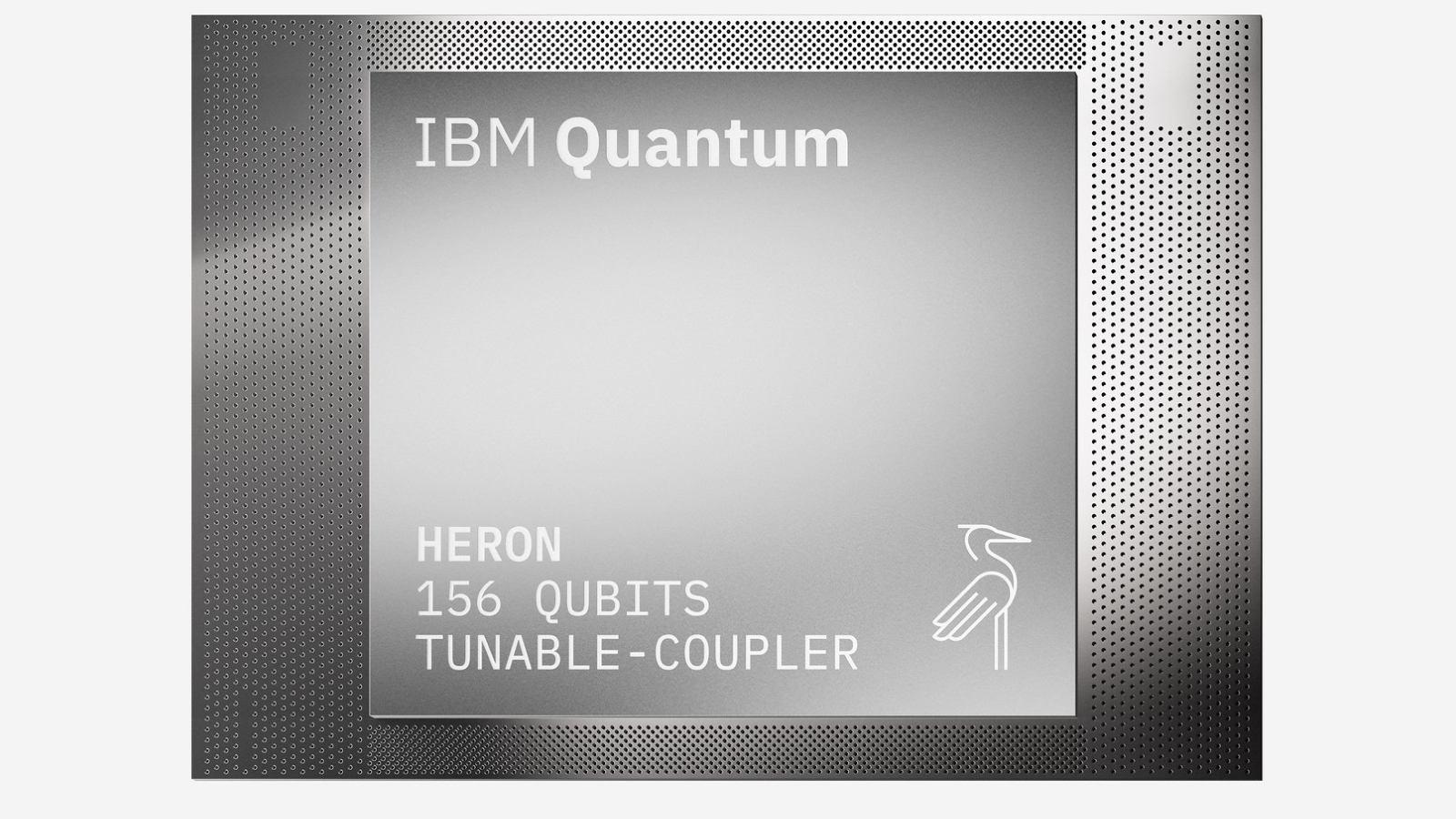IBM's newest 156-qubit quantum chip can run 50 times faster than its predecessor — equipping it for scientific research
When combined with Qiskit software tools, the 156-qubit R2 Heron quantum processor can perform 5,000 two-qubit gate operations — double the previous best — meaning it's ready for complex quantum computations, IBM scientists say.

IBM's latest quantum computer is now powerful enough for useful scientific research, scientists say, after the company made significant hardware and software improvements to its quantum system.
The new system is made of two parts: a new 156-qubit quantum processing unit (QPU) called R2 IBM Heron (the second generation of a chip launched last year); and Qiskit — a collection of software tools and algorithms designed to optimize quantum computing performance.
The result is a new system that can perform tasks up to 50 times faster than previous efforts, according to benchmarking data. For reference, in IBM's 2023 quantum utility experiment, published in the journal Nature, its most powerful quantum computer at the time took 122 hours to run workloads in the benchmark. The new system, fitted with the R2 Heron QPU, took just 2.4 hours.
The new quantum computers, based in IBM's data centers based around the world can tackle scientific problems across materials, chemistry, life sciences, high-energy physics and more domains, IBM representatives said in a statement.
"Advances across IBM Quantum hardware and Qiskit are enabling our users to build new algorithms in which advanced quantum and classical supercomputing resources can be knit together to combine their respective strengths," Jay Gambetta, vice president for IBM Quantum, said in the statement.
Next-generation quantum processing
The R2 Heron QPU is fitted with 156 qubits arranged in a heavy-hexagonal lattice — a topological structure that IBM uses for all its quantum processors. This enables the system to reliably execute quantum circuits of up to 5,000 two-qubit gates — which is nearly double the 2,880 two-qubit gates in the 2023 utility experiment, powered by the 127-qubit Eagle QPU.
Sign up for the Live Science daily newsletter now
Get the world’s most fascinating discoveries delivered straight to your inbox.
Two-qubit gates are essential to unlocking the exponential power of a quantum computer — in which the more qubits there are fitted into a system, the more calculations can run in parallel. Single qubit gates allow for individual qubits to rotate or flip their states, while two-qubit gates operating in pairs of qubits tap into the laws of quantum mechanics to enable entanglement between them. While single-qubit gates can function on a basic level, utilizing two-qubit gates can enable a quantum computer to perform far more complex calculations.
The new R2 Heron chip also features "two-level system mitigation," which helps to reduce the impact of disturbances to the qubits interacting with the materials surrounding them. The system also benefits from software improvements to error correction — namely, the use of Qiskit's tensor error network mitigation algorithm (TEM).
Further software improvements, including the launch of the latest generation of the runtime engine, optimizing data movement and the introduction of parametric compiling, mean the new system can run at 150,000 circuit layer operations per second (CLOPS). In comparison, base performance was just 950 CLOPS in 2022 and 37,000 CLOPS earlier this year when optimizing data movement was first introduced.
Quantum-centric supercomputing
IBM representatives claim that the latest developments feed into their vision of developing "quantum-centric" supercomputers — which combine quantum and classical computers to achieve viable results sooner than they would by using only quantum computers. .
This is because hybrid systems can address workloads in parallel, breaking down complex algorithms by assigning parts of the task to the half of the system for which they are best suited. Once these chunks are solved, the software layer seamlessly stitches the problems back together.
An example of quantum-centric supercomputing in action is at RIKEN, a scientific research center in Japan. Using a method known as "Quantum-Selected Configuration Interaction," outlined in a paper published to the arXiv preprint database in 2023, scientists are using quantum hardware to model the electronic structure of iron sulfides.
Scientists at RIKEN have also embarked on a project to build a quantum-high-performance-computing hybrid platform by integrating Fugaku, one of the world's fastest supercomputers, with an on-premises IBM System Two quantum computer powered by the Heron QPU.

Keumars is the technology editor at Live Science. He has written for a variety of publications including ITPro, The Week Digital, ComputerActive, The Independent, The Observer, Metro and TechRadar Pro. He has worked as a technology journalist for more than five years, having previously held the role of features editor with ITPro. He is an NCTJ-qualified journalist and has a degree in biomedical sciences from Queen Mary, University of London. He's also registered as a foundational chartered manager with the Chartered Management Institute (CMI), having qualified as a Level 3 Team leader with distinction in 2023.









